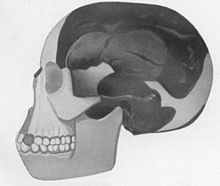All Things
- More About The End Of Science
Science News, January 19, 2008In a previous post I mentioned some inklings that seem to indicate that scientific development is decelerating. In this post I will focus on further evidence: the fact that most of the new discoveries being made in many sciences...
- The End Of Science
Servers at LAAS by Guillaume Paumier Licensed under CC BY 3.0 via Wikimedia CommonsIn my previous article I wrote this: perhaps our scientific civilization won?t endure beyond this century. This is what I mean by the title of this article (the end of...
- Questions For Materialist Atheists
Steven WeinbergThere is a website (10 questions Christians must answer) that offers 10 questions to believers in Christianity. If they consider and meditate these questions deeply, they are supposed to convince themselves that their religious beliefs...
- The Precariousness Of Scientific Theories
It is better to keep a certain skepticism about scientific theories,. Not only because these theories are always simple approximations tuned by further advances, as in the case of Newtonian gravitation and Einstein?s general relativity, quoted in a previous...
- Cultural Evolution And Biological Evolution
Cultural and biological evolution are similar because natural selection acts in both cases. Cultural productions compete against one another and many become extinct. As in the case of living beings, not always the best win. Chance has an influence. In...
All Things
Scientific fraud, a danger for science
 |
| Piltdown man |
Fraudulent activity is not exclusive of politicians and the world of finances, though perhaps it is more widespread in those fields. It also affects scientists, who, like every human being, are prone to temptation and sometimes (surprisingly rarely) fall into it. The reasons are the usual: ambition, fame and the unbearable pressure to publish results.
The first thing we must do is find out what is fraud and what it is not. According to the criteria used in the United States, there are just two essentially fraudulent scientific activities: plagiarism and the invention or falsification of experimental results. The following activities are questionable, but not fraud: mistaking speculation with fact; incorrect use of statistical procedures; seeking approval after the fact for ethically controversial experiments. Finally, the following activities must not be considered fraudulent or questionable: judgment errors, differences of opinion in the interpretation of data, or involuntary errors in their analysis.
Let?s consider a hypothetical case. A scientist repeats four times the same experiment. Three of them give the same result, the other one is different. To improve the presentation of his results and ensure publication, in his article he eliminates the divergent experiment and refers only to the other three. This may be a small fraud, but it is certainly a fraud. Einstein said: The right to seek the truth implies also a duty: one must conceal no part of what one recognizes to be the truth.
A few scientific frauds are famous and have been described often, so I will just mention them, adding a list of a few relatively recent purported frauds.
? In the early twentieth century, Paul Kammerer attempted to prove the inheritance of acquired characteristics (Lamarckism) against Darwin's theory. A fraud was discovered when it was ascertained that the hands of the midwife toad had been stained with India ink. The actual fraud could have been performed by an assistant, worried about the scientific prestige of his leader.
? The Piltdown Man, the English missing link for man, was built in 1912 with a modern human skull and the jaw of an orangutan. Over a century later, there is still controversy about who was the author of the fraud.
? The spectacular results obtained by Franz Moewus in the 1940s in the field of molecular biology were based on a set of apparently imaginary experiments.
? In his analysis of the influences on intelligence (inheritance or environment and education), Cyril Burt, then considered one of the most eminent British psychologists, published studies on identical twins educated separately, which seemed to decide the issue in favor of genetic inheritance. Years after his death, it was found that, of the 119 pairs of twins supposedly studied by Burt, only the first 15 were real; all the others had been invented. Burt seems to have performed other minor frauds, such as sending letters, reviews and notes under a pseudonym to the magazine of which he was editor (the British Journal of Psychology), citing himself and thus increasing the impact factor of his scientific papers.
? In 1974, the American immunologist Summerling announced he had managed to transplant in black mice the skin of albino mice without causing rejection. When his results were questioned, he was caught red-handed while dyeing white the hair of a mouse.
? In 1986, Claudio Milanese, of Dana-Farber Cancer Institute at Harvard University, acknowledged having manipulated the results of an experiment that led to the publication of the discovery of a nonexistent molecule (interleukin-4A).
? In an analysis conducted between 1977 and 1988 by the US FDA, serious deficiencies were detected in many reports and laboratory data of researchers hired by pharmaceutical companies to study experimental drugs, such as data manipulation, lack of patient consent, or incorrect scientific protocols. 395 cases were studied thoroughly, for they presented particularly serious deficiencies. In 63 cases the FDA took disciplinary measures against the researchers.
? Between 1989 and 1991, the government of the United States analyzed 200 possible cases of scientific misconduct. In 30 of them, the suspicion was confirmed.
? Between 1992 and 1999, Nordic federal agencies investigated 37 cases of scientific misconduct. Just 9 were confirmed.
? In 1999 a fossil was discovered in China, an apparent missing link between dinosaurs and birds. It was called Archaeoraptor and was widely publicized by National Geographic. It was later discovered that the fossil had been built with the head of the extinct bird Yanomis, the tail of a Microraptorand the legs of a third species.
? In 1999 Victor Ninov and colleagues at the Lawrence Berkeley Lab announced their success in creating elements 116 and 118 for the first time. In 2002, a panel concluded that Ninov had intentionally manipulated data. Although he denied the charge, Ninov was fired.
? In 2000 Robert Tracy, a member of Michael Lieber?s team, confessed having manipulated the data to show the role of hybrid DNA and RNA in the synthesis of antibodies. His colleagues had to withdraw the paper from the journal.
? In 2002 a panel of Lucent Technologies accused Jan Hendrik Schön of Bell Labs of having manipulated molecular electronics experiments that seemed to have led to a cascade of discoveries: a transistor made of a single molecule; plastic transistors; superconducting transistors... The manipulated data had polluted 25 scientific articles, including several in Nature and Science. Schön was fired.
? In 2004 the Korean Woo Suk Hwang of Seoul National University announced that he had successfully cloned human embryonic stem cells. The journal Science published two papers. In late 2005, this research was questioned, Hwang was charged with fraud and expelled from the university, and Science retracted both papers.
? In an article published in The Lancet in 2005, Jon Sudbø of the Norwegian Radium Hospital and the University of Oslo published a study showing that ibuprofen reduces the risk of mouth cancer in smokers. Accused of fraud, Sudbø admitted having invented the 908 patients mentioned in the paper.
 |
| David Baltimore |
Not every purported scientific frauds are frauds. In this connection, as everywhere else, one must be exquisitely scrupulous to assure the presumption of innocence. In 1986, the Nobel Prize David Baltimore endorsed a paper of his collaborator Thereza Imanishi-Kari on the insertion of genes in mice. Margot O?Toole, a postdoctoral fellow of the team, accused Thereza of having manipulated the experimental data. For a while, it seemed that the accusation had a base. In 1991, Baltimore was forced to resign as president of the Rockefeller University in New York. In 1994, Imanishi-Kari was declared guilty of 19 charges of scientific misconduct by a panel of the Office of Research Integrity (ORI). In 1996, however, a federal appeals panel decided that the ORI analysis had been irrelevant, incredible or uncorroborated, and declared Imanishi-Kari innocent of the 19 charges. By then, however, after ten years of struggle, Thereza had abandoned her research career.
The same post in Spanish
Manuel Alfonseca
- More About The End Of Science
Science News, January 19, 2008In a previous post I mentioned some inklings that seem to indicate that scientific development is decelerating. In this post I will focus on further evidence: the fact that most of the new discoveries being made in many sciences...
- The End Of Science
Servers at LAAS by Guillaume Paumier Licensed under CC BY 3.0 via Wikimedia CommonsIn my previous article I wrote this: perhaps our scientific civilization won?t endure beyond this century. This is what I mean by the title of this article (the end of...
- Questions For Materialist Atheists
Steven WeinbergThere is a website (10 questions Christians must answer) that offers 10 questions to believers in Christianity. If they consider and meditate these questions deeply, they are supposed to convince themselves that their religious beliefs...
- The Precariousness Of Scientific Theories
It is better to keep a certain skepticism about scientific theories,. Not only because these theories are always simple approximations tuned by further advances, as in the case of Newtonian gravitation and Einstein?s general relativity, quoted in a previous...
- Cultural Evolution And Biological Evolution
Cultural and biological evolution are similar because natural selection acts in both cases. Cultural productions compete against one another and many become extinct. As in the case of living beings, not always the best win. Chance has an influence. In...
